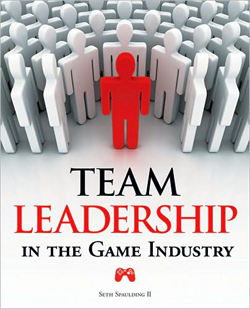This article was originally published on June 22, 2011 at Pulsar Engine.

|
Team Leadership in the Game Industry
|
The Review
Simply put, I really liked this book. In fact, I thought the book was so good that I bought two additional copies as gifts for a pair of coworkers who were just getting started as leaders of their own teams.
It contains a wealth of knowledge on the subject of leadership in the context of the game industry. Understandably, the book leans towards the artist camp in a game company, but the advice offered in the book is most certainly applicable towards other engineering or game design (I myself am an engineer and as I mentioned above, I found it to be very useful!).
But beyond the organizational charts and high level discussion of team dynamics, the book drills into some very important topics. For example, I was very impressed with the section on how to best evaluate whether someone is suited for a leadership position or instead set them into a senior position without placing them in charge of a team. Spaulding lays out several different scenarios and guides the reader through each one, explaining why people with different skill sets and personalities may or may not work out when placed in charge of over a team.
Another topic that is addressed in detail is what to do when things go sour: personality conflicts, team meltdowns, over-zealous leaders, and both incompetent team members and team leaders.
The book also contains insights directly from the GDC Roundtable sessions, including a detailed look at the question “What traits would you want in your ideal team leader?” Spaulding outlines the traits that are commonly chosen common and explains not only why they are common, but also why they are good traits or which ones may be more important than others.
On top of all of this, the book includes a collection of interviews (one at the end of each chapter) with industry veterans from an assortment of leadership positions and disciplines (art, production, engineering, etc). I especially enjoyed these because they showed both a variety of answers to some questions, while others most answered with the same useful advice.
I would recommend this book to anyone in the industry who is currently leading a team, or is thinking that they might want to lead a team in the near future.